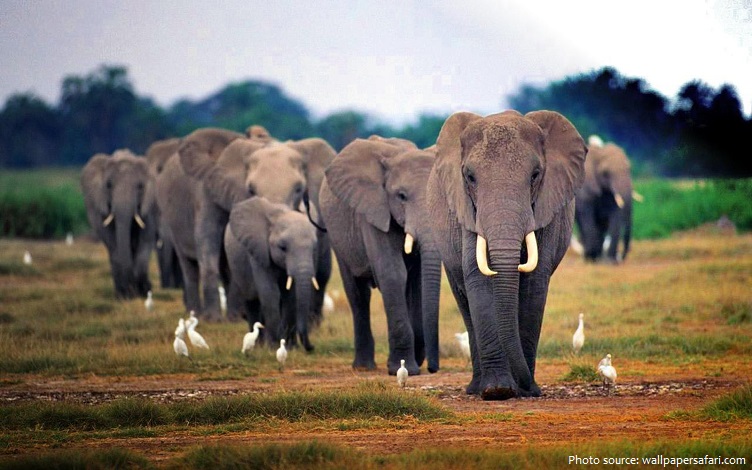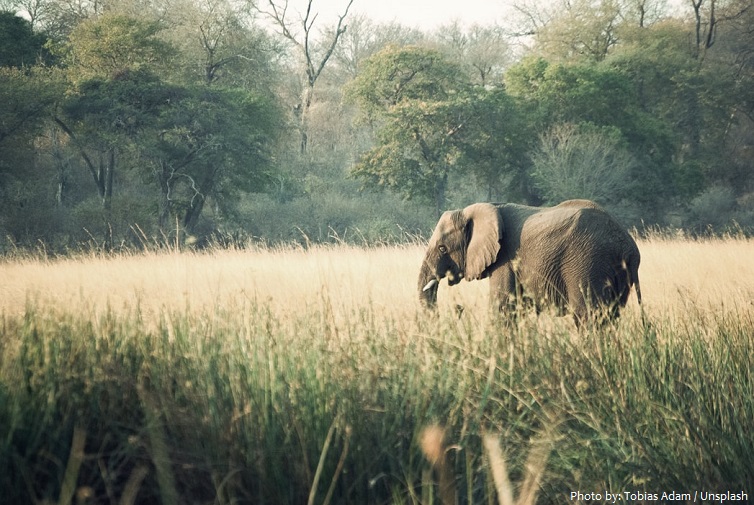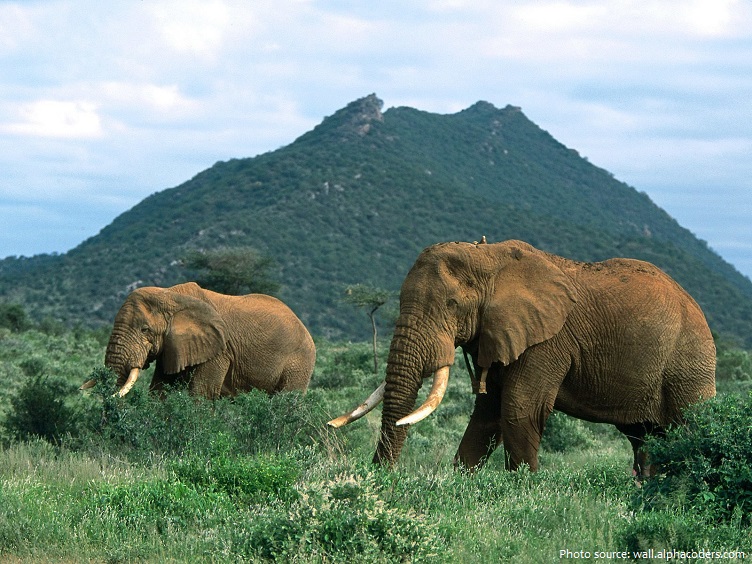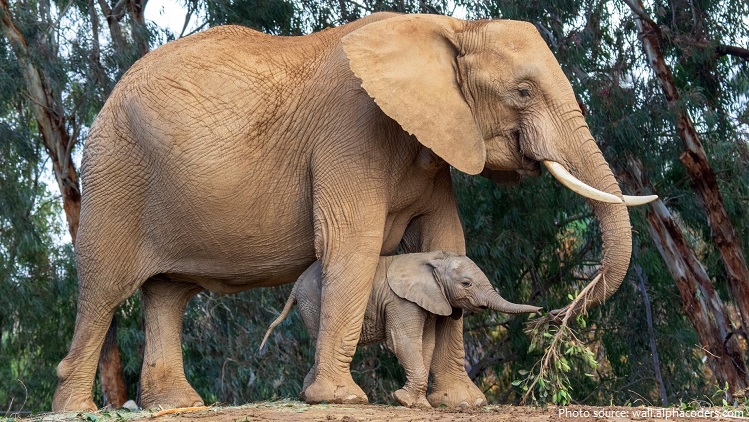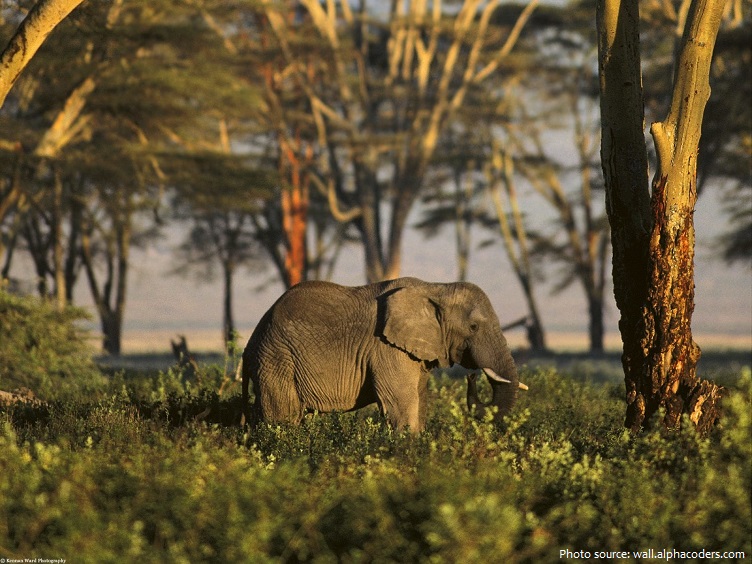The African forest elephant is one of three elephant species.
It is native to central and western Africa.
The African forest elephant is found in several African countries including Gabon, the Democratic Republic of Congo, Cameroon and Central African Republic, Ivory Coast, Liberia, and Ghana.
This elephant species change habitats seasonally, inhabiting swampy areas during the dry season and lowland rainforest areas in the wet season.
The lifespan of the African forest elephant is between 60 and 70 years.
The African forest elephant is the smallest of the three living elephant species.
Males are from 2.4 to 3 meters (7.9 to 9.8 feet) tall at the shoulder while females are smaller at about 1.8 to 2.4 m (5.9 to 7.9 ft) tall at the shoulder. They reach a weight of 2–4 tonnes (2.2–4.4 short tons).
African forest elephants have a grey skin, which looks yellow to reddish after wallowing. They have sensitive skin and can be prone to sunburn, especially when young. Their wrinkled skin also helps in keeping them cool because water is trapped in the cracks and crevices, which then evaporates.
The trunk is a prehensile elongation of its upper lip and nose. It is thought to be manipulated by about 40–60,000 muscles. Because of this muscular structure, the trunk is so strong that elephants can use it for lifting about 3% of their own body weight. They use it for smelling, touching, feeding, drinking, dusting, producing sounds, loading, defending and attacking.
The African forest elephant’s tusks are straight and point downwards. Both male and female African elephants have tusks. The tusks are used to push through the dense undergrowth of their habitat. Their tusks can grow to about 1.5 meter (5 feet) long and can weigh between 50 and 100 lb (23 and 45 kg).
Its oval-shaped ears have small elliptical-shaped tips. Its large ears help to reduce body heat; flapping them creates air currents and exposes the ears’ inner sides where large blood vessels increase heat loss during hot weather.
The African forest elephant lives in family groups of up to 20 individuals. Family members look after calves together, called allomothering.
Family groups travel about 7.8 kilometers (4.8 miles) per day and move in a home range of up to 2,000 square kilometers (770 square miles).
The elephant’s feet are sensitive and can detect vibrations through the ground, whether thunder or elephant calls, from up to 16 kilometers (10 miles) away.
African forest elephants are herbivorous, their diet is composed mainly of fruit, leaves, bark, and twigs of rainforest trees. To supplement their diet with minerals, they congregate at mineral-rich waterholes and mineral licks.
African forest elephants have an extremely slow birth rate, putting them under greater pressure from poaching, research suggests. Scientists have found that the animals start to breed at a later age and with longer intervals between calves than other elephant species.
On average, they begin breeding at the age of 23 and give birth every 5–6 years.
Baby elephants weigh around 105 kg (232 lb) at birth. Almost immediately, they can stand up and move around, allowing the mother to roam around and forage, which is also essential to reduce predation. Their tusks do not come until around 16 months and calves are not weaned until they are roughly 4 or 5 years old.
Until recently, the African forest elephant was considered to be a subspecies of the African bush elephant, but new research discovered that they are actually a separate species entirely.
Both African elephant species are threatened foremost by habitat loss and habitat fragmentation following conversion of forests for plantations of non-timber crops, livestock farming, and building urban and industrial areas.
African forest elephants are estimated to constitute up to one-third of the continent’s elephant population, but have been poorly studied because of the difficulty in observing them through the dense vegetation that makes up their habitat.
Since it forages on leaves, seeds, fruit, and tree bark, and is one of the most effective seed dispersers in the tropics it has been referred to as the “megagardener of the forest”.
You can tall whether is African or Asian species by the shape of their ears. Two species from Africa have large ears shaped like the continent of Africa while Asian species have smaller ears shaped like India.
The word “elephant” comes from the Greek word “elephas” which means “ivory”.

